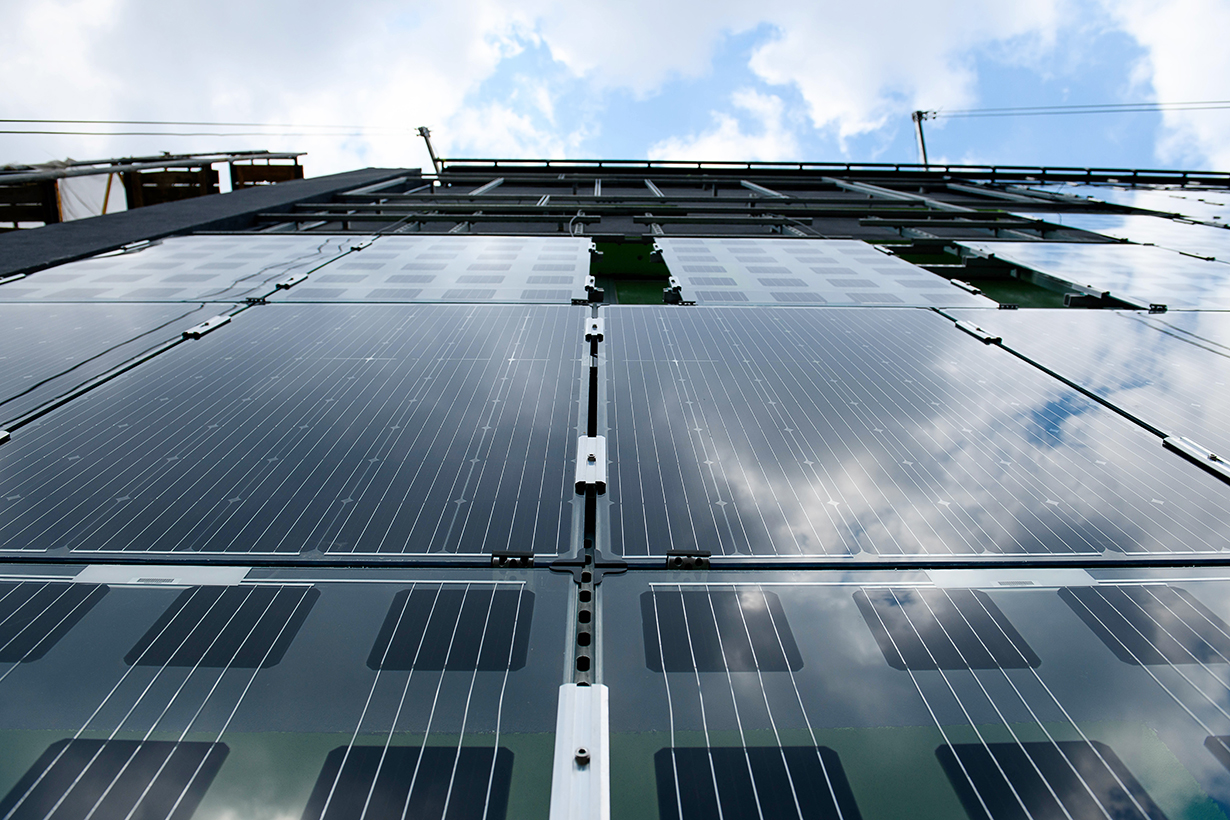CLOSE
About Elements
田中贵金属是贵金属领域的翘楚企业。
支撑社会发展的先进素材和解决方案、
创造了这些的开发故事、技术人员们的心声、以及经营理念和愿景——
Elements是以“探求贵金属的极致”为标语,
为促进实现更加美好的社会和富饶的地球未来传播洞察的网络媒体。

Transparent solar panels for windows hit record 8% efficiency

Ann Arbor MI (SPX) Aug 18, 2020
In a step closer to skyscrapers that serve as power sources, a team led by University of Michigan researchers has set a new efficiency record for color-neutral, transparent solar cells.

The team achieved 8.1% efficiency and 43.3% transparency with an organic, or carbon-based, design rather than conventional silicon. While the cells have a slight green tint, they are much more like the gray of sunglasses and automobile windows.
“Windows, which are on the face of every building, are an ideal location for organic solar cells because they offer something silicon can’t, which is a combination of very high efficiency and very high visible transparency,” said Stephen Forrest, the Peter A. Franken Distinguished University Professor of Engineering and Paul G. Goebel Professor of Engineering, who led the research.
Buildings with glass facades typically have a coating on them that reflects and absorbs some of the light, both in the visible and infrared parts of the spectrum, to reduce the brightness and heating inside the building.
Rather than throwing that energy away, transparent solar panels could use it to take a bite out of the building’s electricity needs. The transparency of some existing windows is similar to the transparency of the solar cells Forrest’s group reports in the journal Proceedings of the National Academy of Sciences.
“The new material we developed, and the structure of the device we built, had to balance multiple trade-offs to provide good sunlight absorption, high voltage, high current, low resistance and color-neutral transparency all at the same time,” said Yongxi Li, an assistant research scientist in electrical engineering and computer science.
The new material is a combination of organic molecules engineered to be transparent in the visible and absorbing in the near infrared, an invisible part of the spectrum that accounts for much of the energy in sunlight.
In addition, the researchers developed optical coatings to boost both power generated from infrared light and transparency in the visible range – two qualities that are usually in competition with one another.
The color-neutral version of the device was made with an indium tin oxide electrode. A silver electrode improved the efficiency to 10.8%, with 45.8% transparency. However, that version’s slightly greenish tint may not be acceptable in some window applications.
Transparent solar cells are measured by their light utilization efficiency, which describes how much energy from the light hitting the window is available either as electricity or as transmitted light on the interior side.
Previous transparent solar cells have light utilization efficiencies of roughly 2-3%, but the indium tin oxide cell is rated at 3.5% and the silver version has a light utilization efficiency of 5%.
Both versions can be manufactured at large scale, using materials that are less toxic than other transparent solar cells. The transparent organic solar cells can also be customized for local latitudes, taking advantage of the fact that they are most efficient when the sun’s rays are hitting them at a perpendicular angle. They can be placed in between the panes of double-glazed windows..
Forrest and his team are working on several improvements to the technology, with the next goal being to reach a light utilization efficiency of 7% and extending the cell lifetime to about 10 years. They are also investigating the economics of installing transparent solar cell windows into new and existing buildings.
Research Report: “Color-Neutral, Semitransparent Organic Photovoltaics”
This article was from SpaceDaily.com and was legally licensed through the Industry Dive publisher network. Please direct all licensing questions to legal@industrydive.com.
![]()







